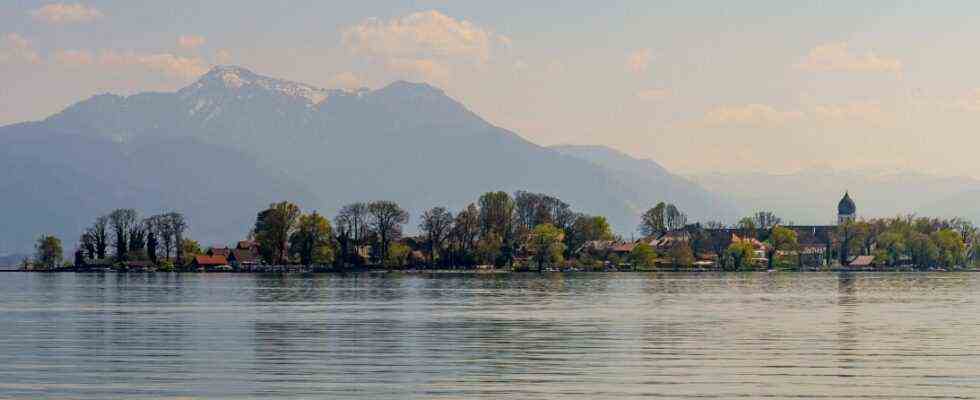The interior committee of the Bavarian state parliament has declared the ongoing dispute over the grave cross for the Nazi general and war criminal Alfred Jodl on the Fraueninsel in the Chiemsee to be settled. At least that’s how the committee decided on Wednesday a petition with which a couple from northern Germany wanted to have the cross removed. Since Jodl’s name and rank are now covered with a stone slab, the cross is no longer to be seen as a mock grave or even a memorial, is the joint assessment of Matthias Enghuber (CSU) and Martin Runge (Greens), who reported the case to their parliamentary colleagues. The committee unanimously agreed.
This is not the first time that the parliamentarians have dealt with the dispute that has haunted the small island community of Chiemsee for years. While the Science Committee had always referred to the responsibility of the municipality since a first petition in 2014, the Interior Committee pushed for a solution for the first time in February 2020. The members now saw such a solution realized with the flush and firmly mounted plate on which “Jodl family” is written and which has been hiding Alfred Jodl’s name for several months. Jodl is not even buried there. After his conviction as a major war criminal, he was executed and his ashes scattered in the Isar. In the grave on the island lie Jodl’s brother, his sister-in-law and his two wives, whose names are written on small stones. However, the dominant cross in the center of the tomb was only marked with Alfred Jodl’s name and dates and a carved iron cross.
The action artist Wolfram Kastner has repeatedly redesigned the Jodl-Kreuz on his own. Here he shows a picture after one of his actions before a 2017 trial. Where Kastner shed blood-red paint, a stone slab now hides Jodl’s name and rank.
(Photo: Matthias Balk / dpa)
A distant relative of Jodl’s second wife had long resisted all attempts to change something on the grave. The hopes that the state parliament and the Ministry of the Interior, among others, had linked to the expiry of the right to use graves in 2018 were not fulfilled either. The congregation, which had previously worked for a long time, had refused an extension. But the descendant fought it in court because the community could not prove a lack of grave sites and the court saw no evidence that the cross glorified National Socialism or that right-wing extremist meetings were taking place there. Matthias Enghuber now also emphasized this in the Interior Committee. According to him, the Jodl grave was “never a place of pilgrimage, let alone a memorial or a memorial or something similar”.
Martin Runge saw it differently, but all members of parliament agreed on the assessment of the stone slab as a satisfactory and satisfactory solution – especially since the community is now working on the long-requested explanatory board and, on the advice of Munich, the head of the Flossenbürg concentration camp memorial, Jörg Skribeleit, has consulted. Skribeleit, so it was said in the committee, but now harbor doubts about such a board and rather recommend mediation with all those involved.
The architect and islander Georg Wieland has been fighting the Jodl Cross for years.
(Photo: Matthias Köpf)
One of these participants is the island resident Georg Wieland, who made the subject known far beyond the island through his 2014 petition. This in turn led to several actions by the artist Wolfram Kastner at the grave, which the judiciary prosecuted as damage to property. Wieland has declared that the stone slab is neither a good nor a solution at all. He also rejects the planned plaque because it will not be attached directly to the grave and should also have the cemetery as a whole and the artist graves there as a theme.

